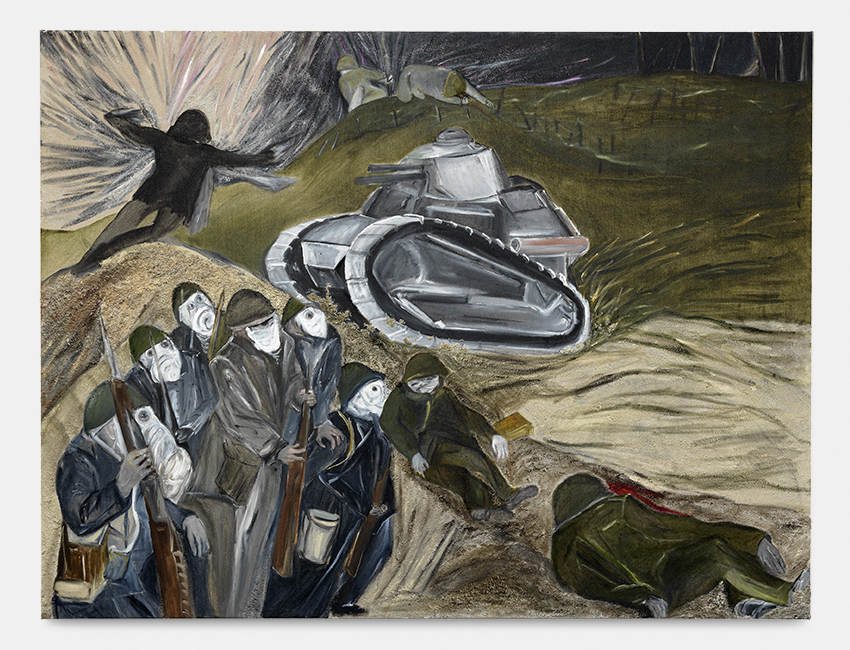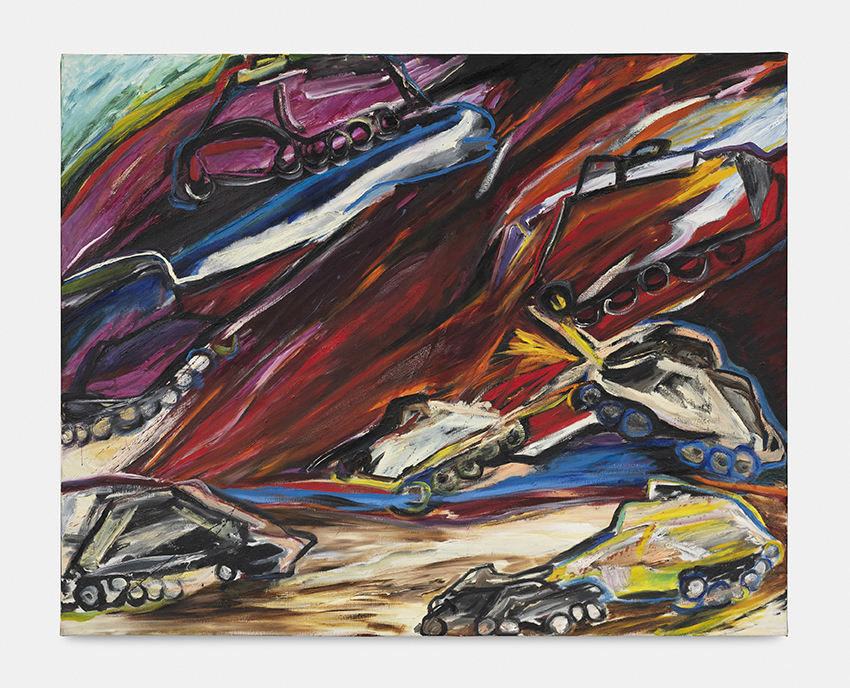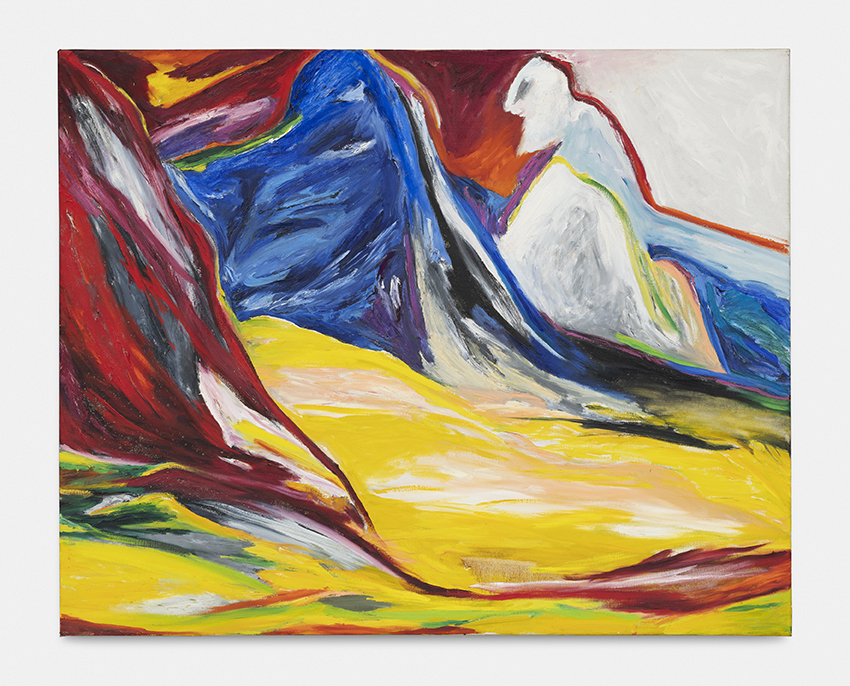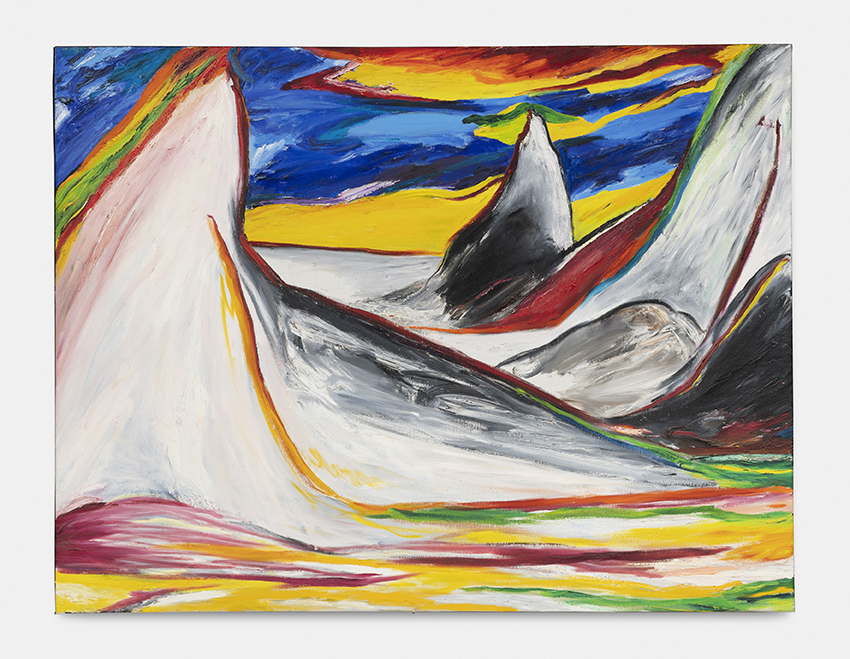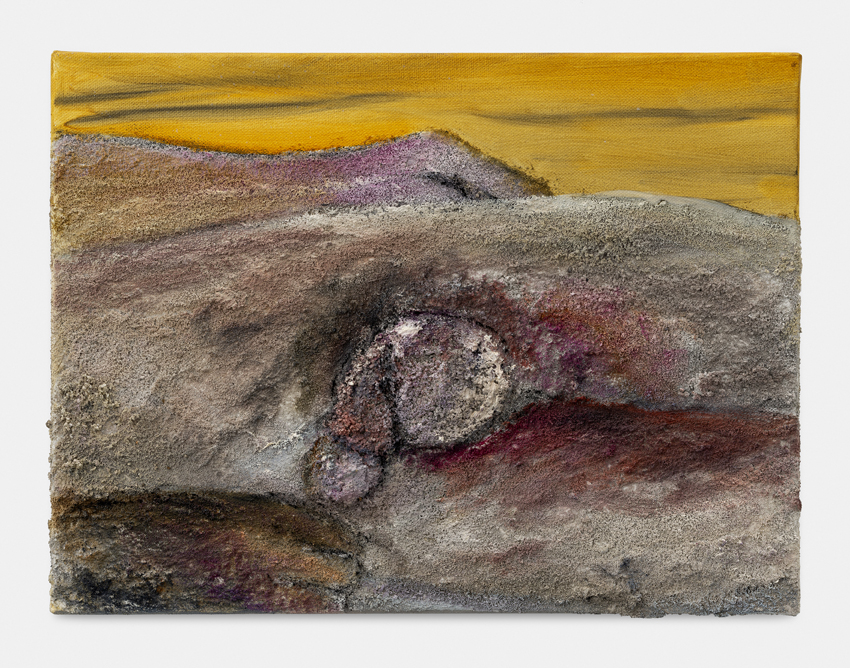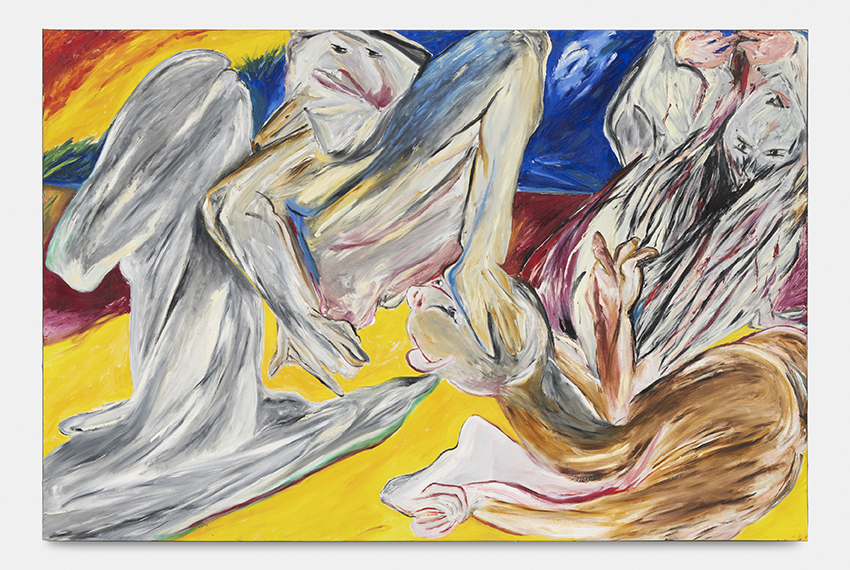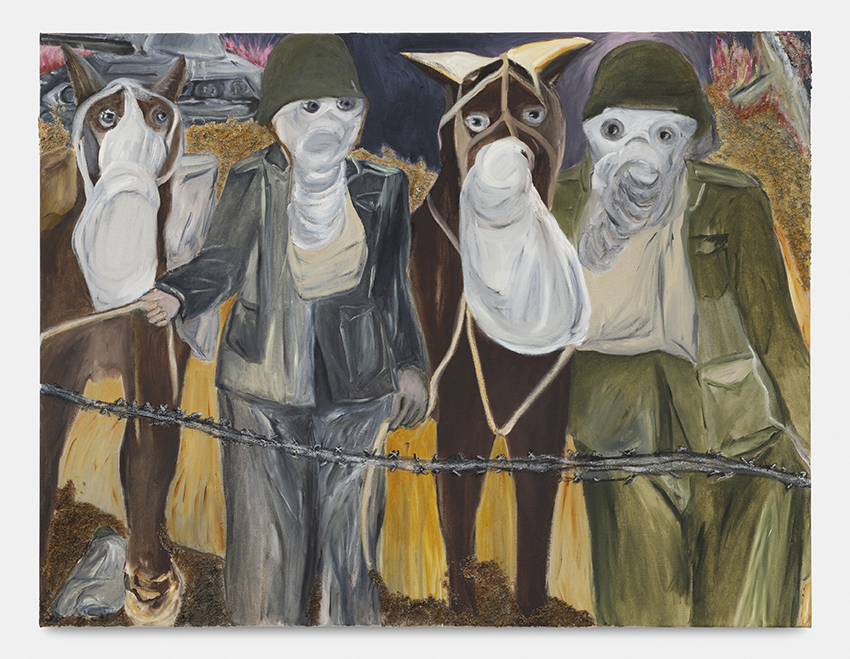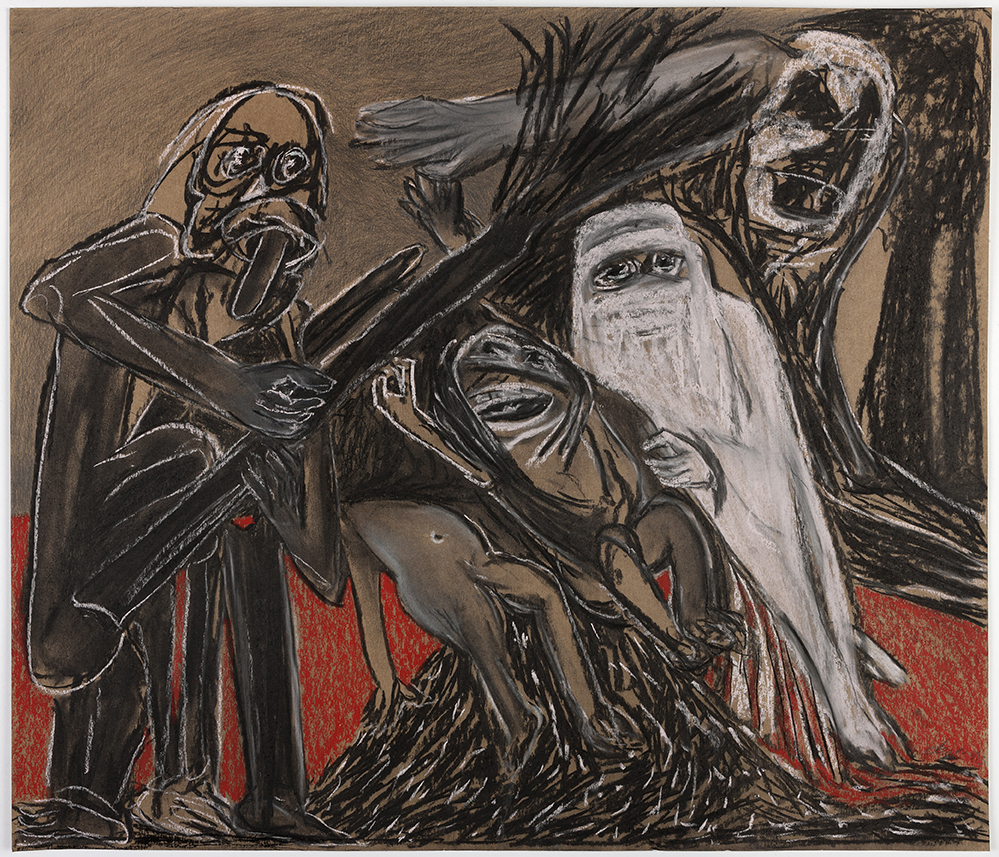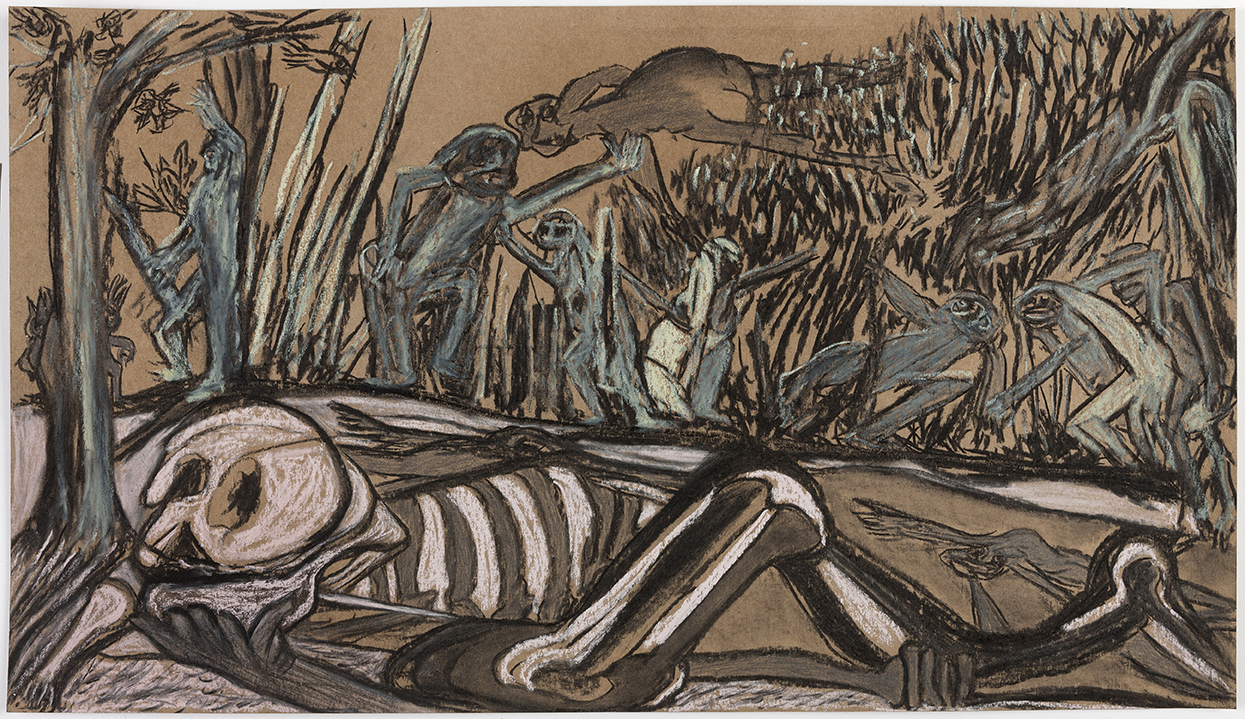Jacqueline de Jong – WAR paintings from 1991 to 2014
Jacqueline de Jong
WAR paintings from 1991 to 2014
| (Past) | 12.05.202012.05.20 — 18.07.202018.07.20 |
|---|---|
| (Gallery) | Rue de Livourne 35 Livornostraat |
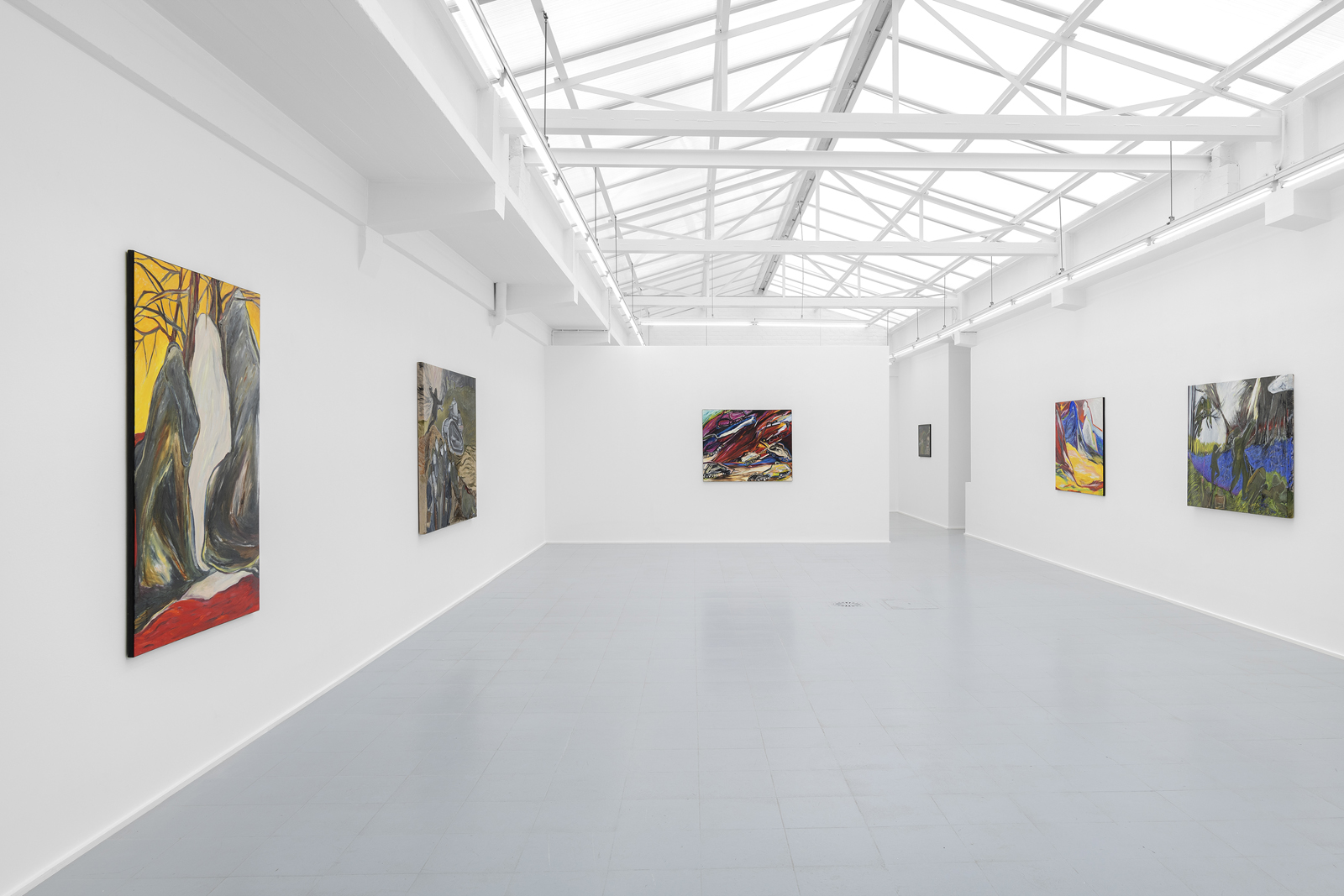
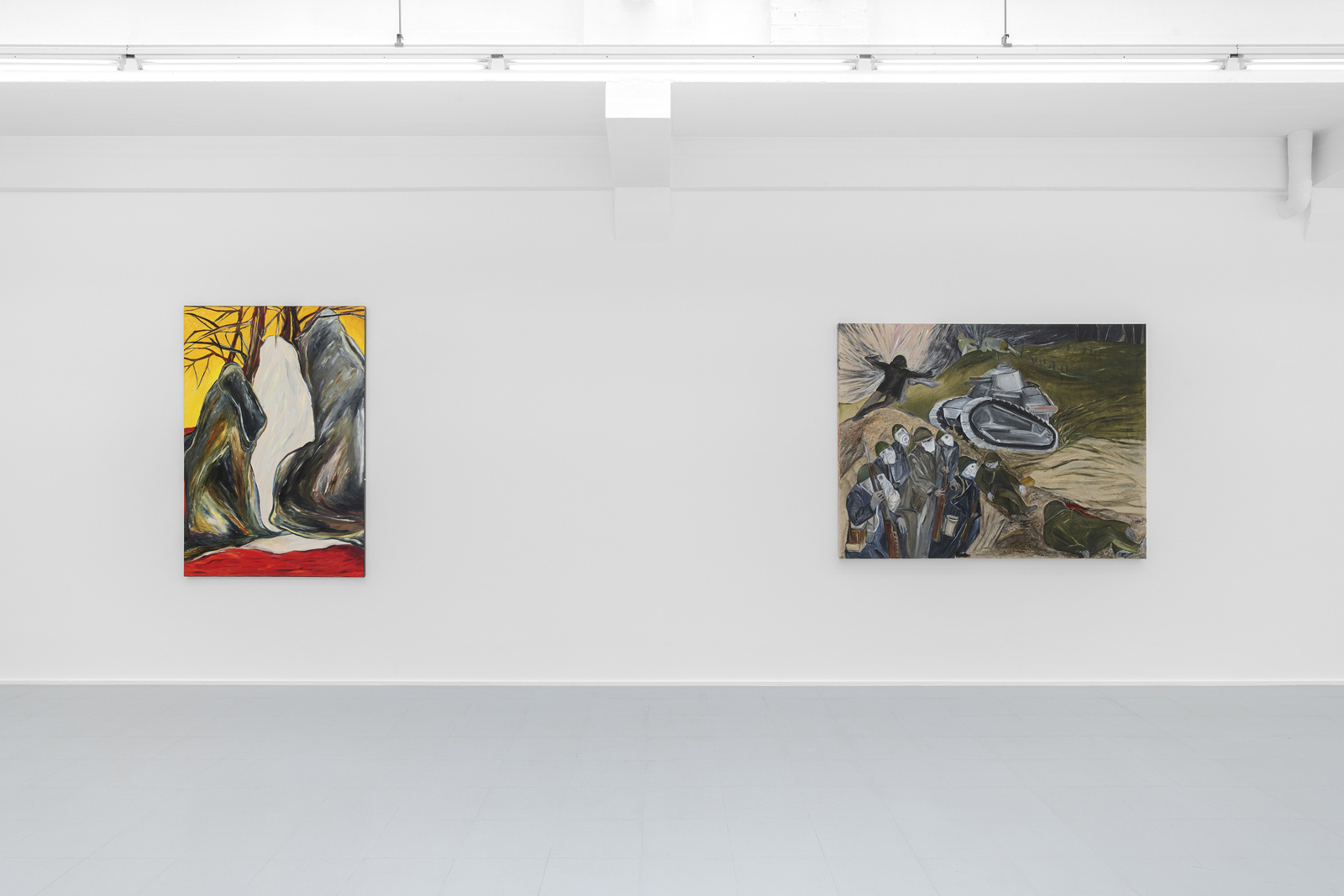
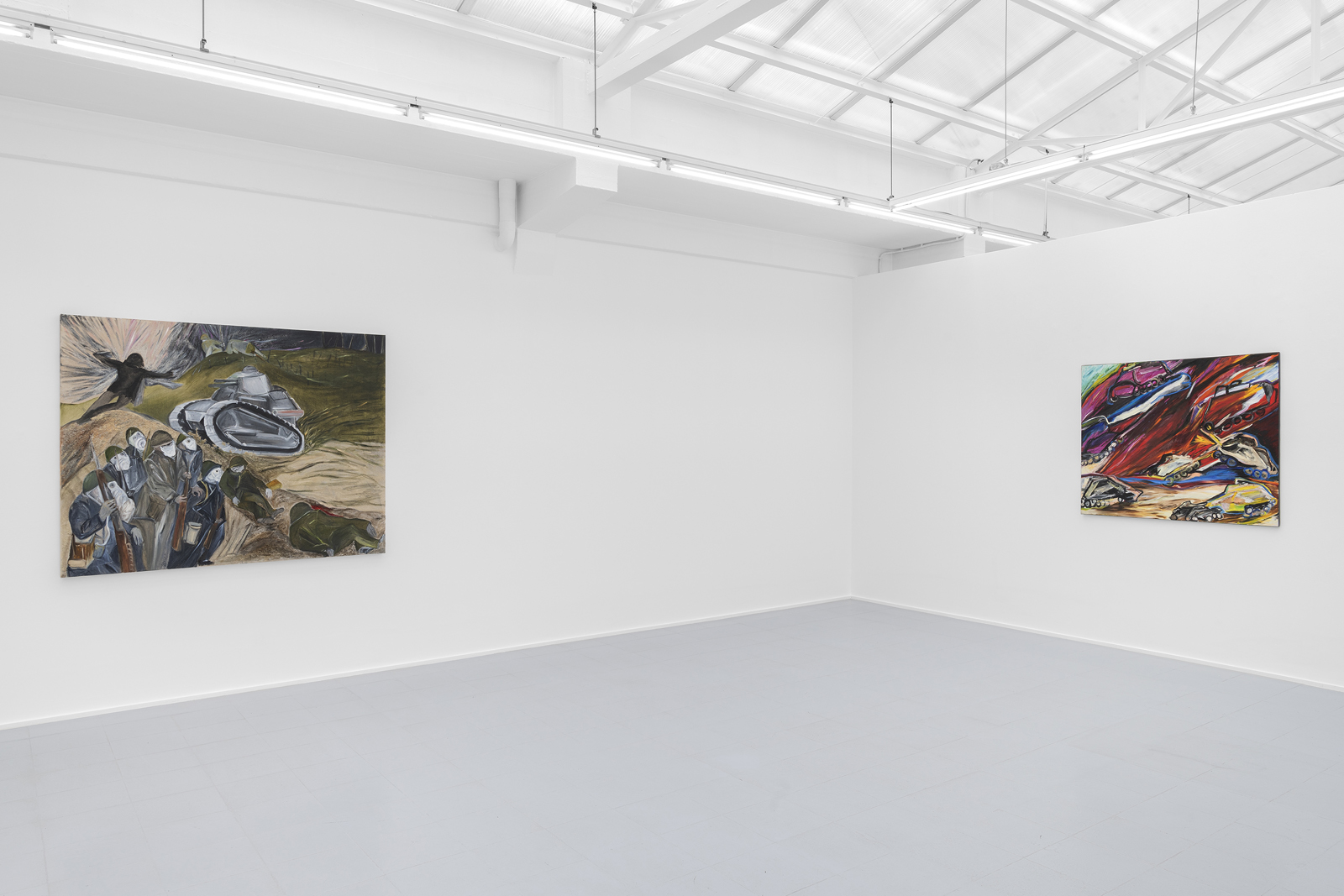
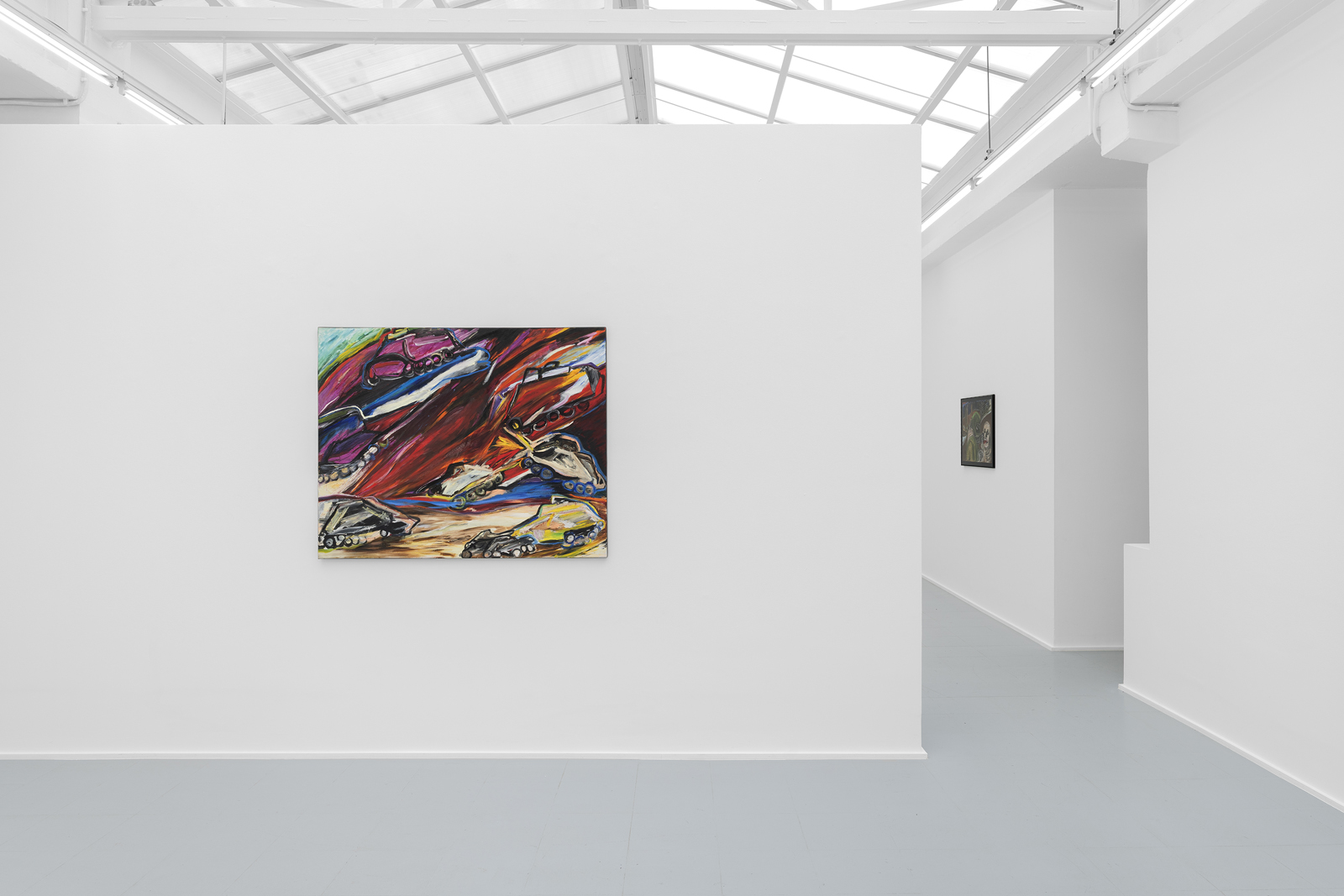
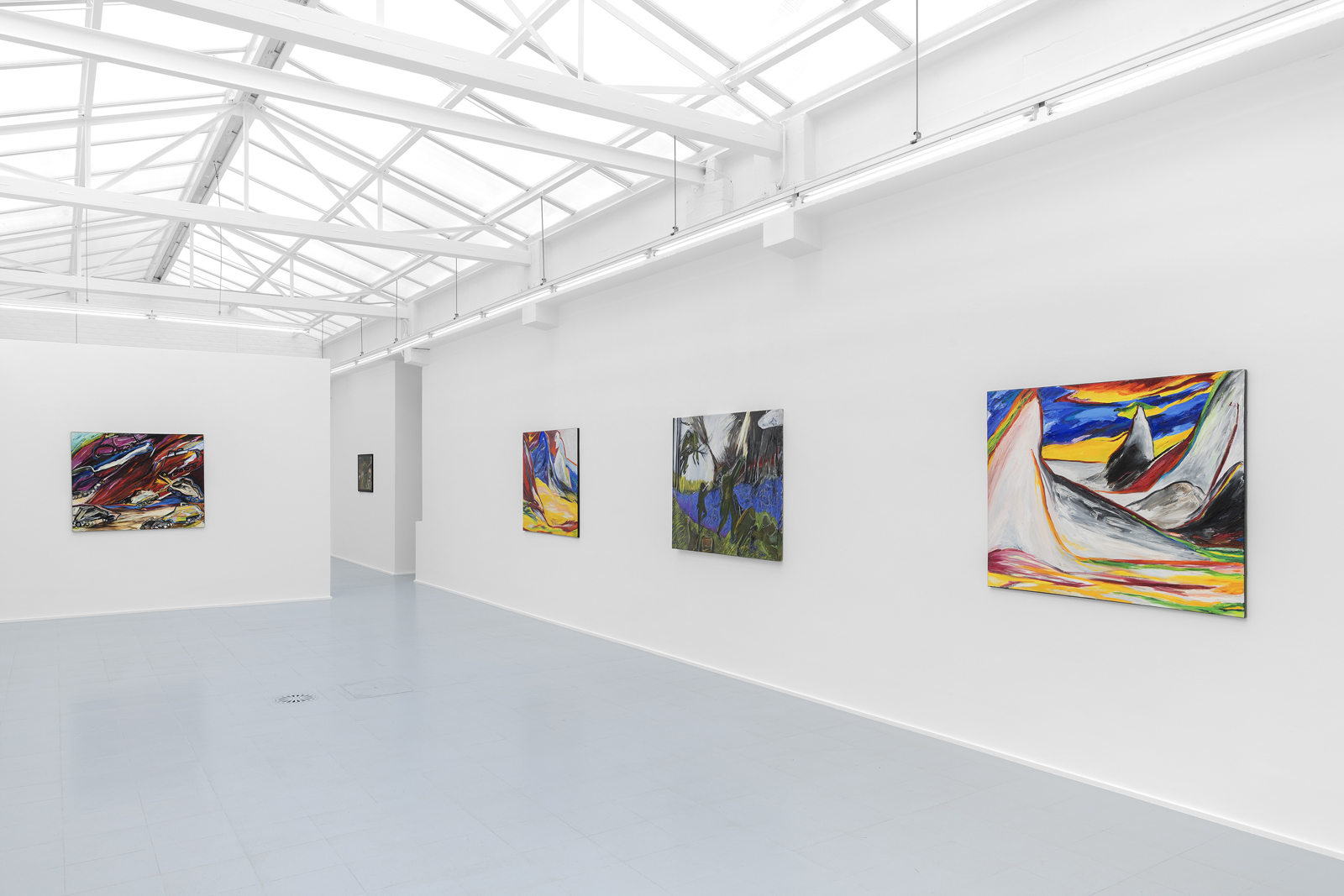
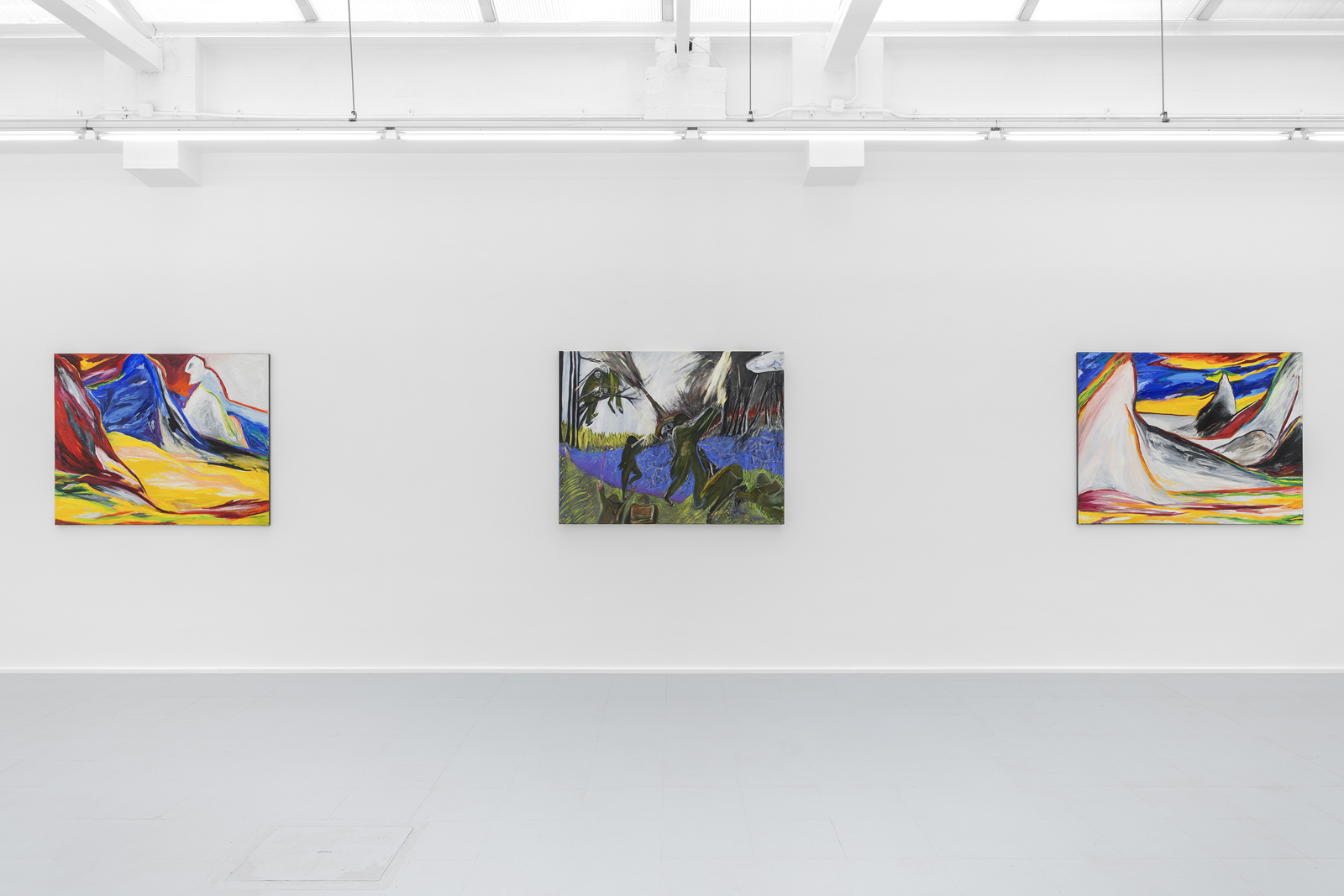
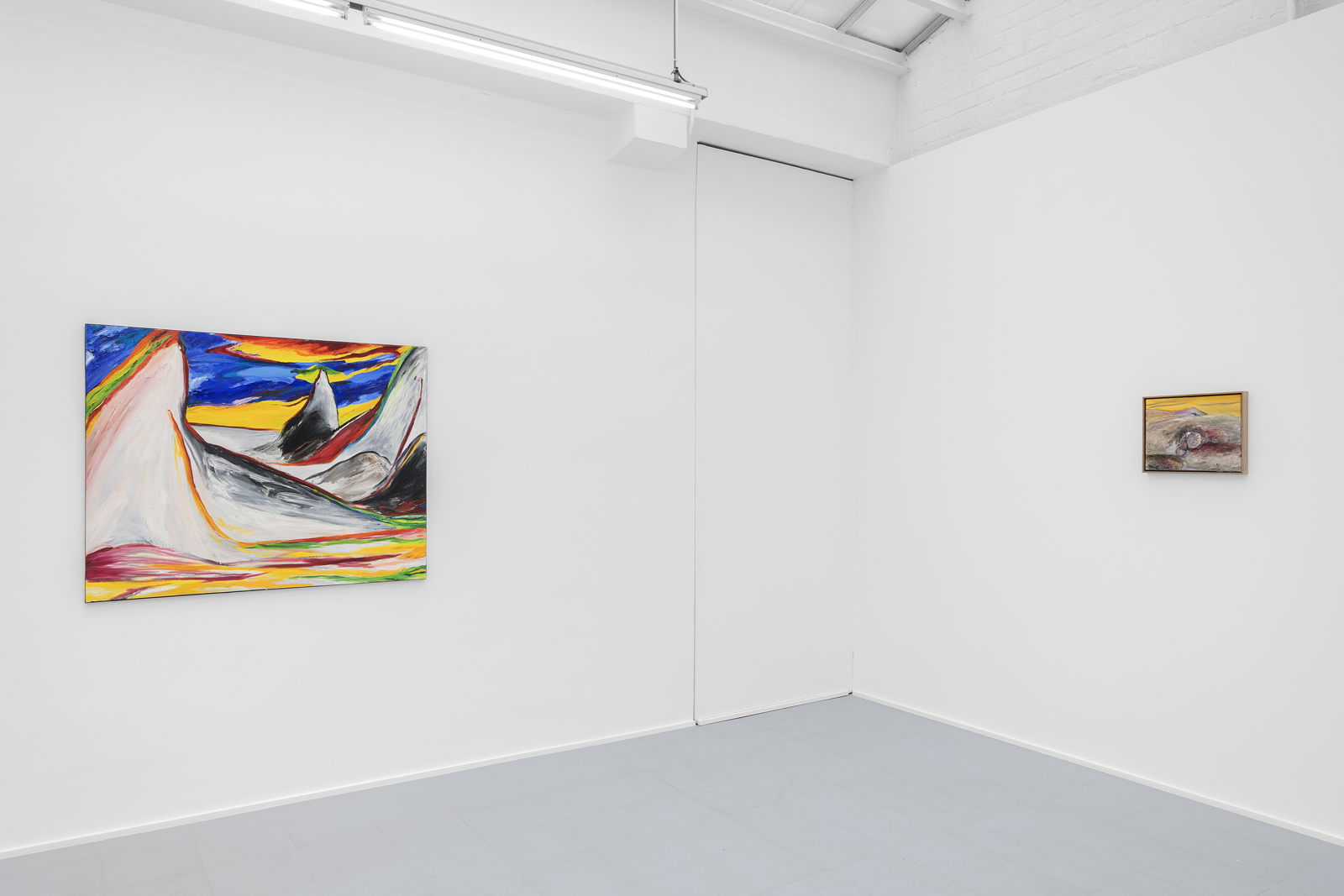
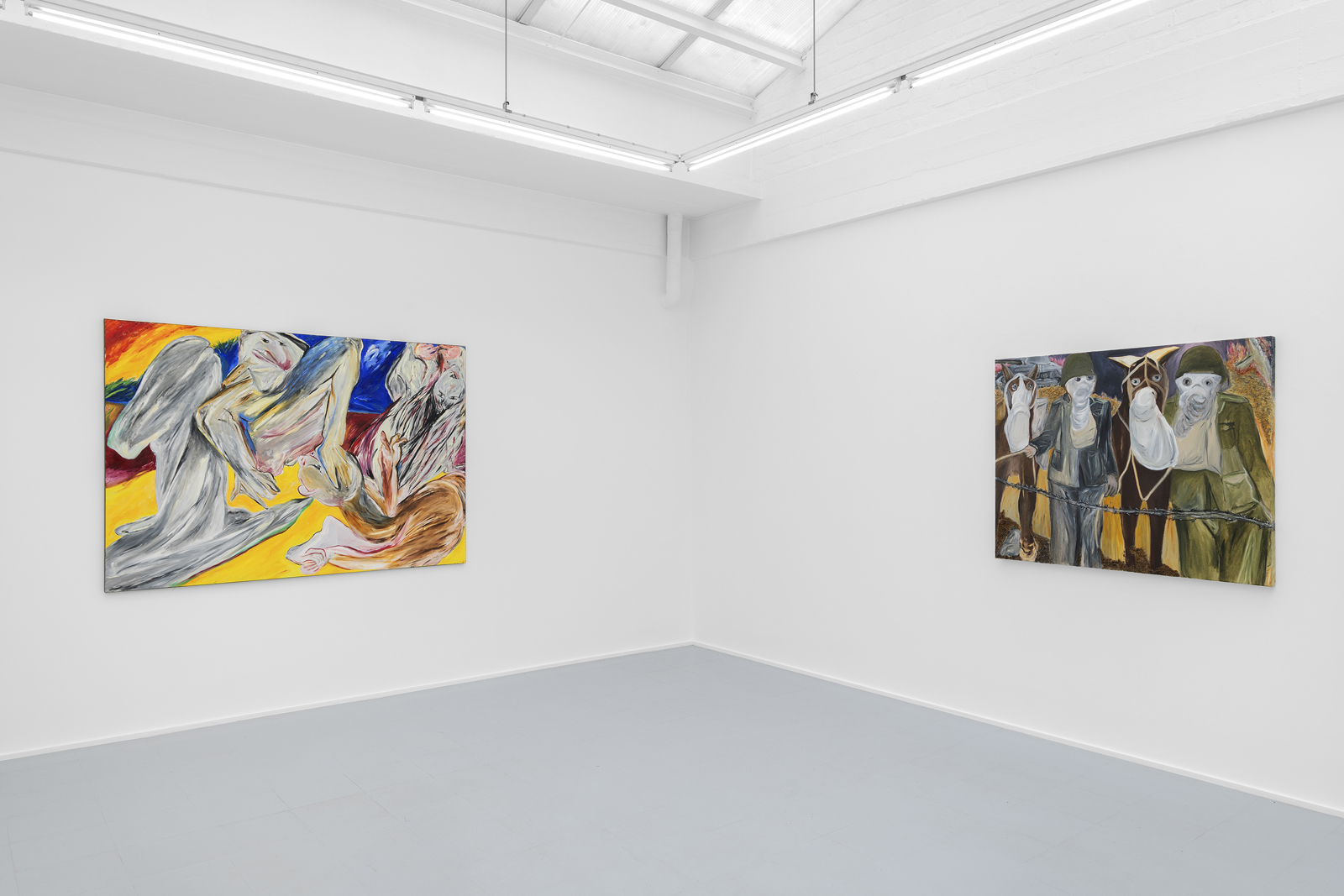
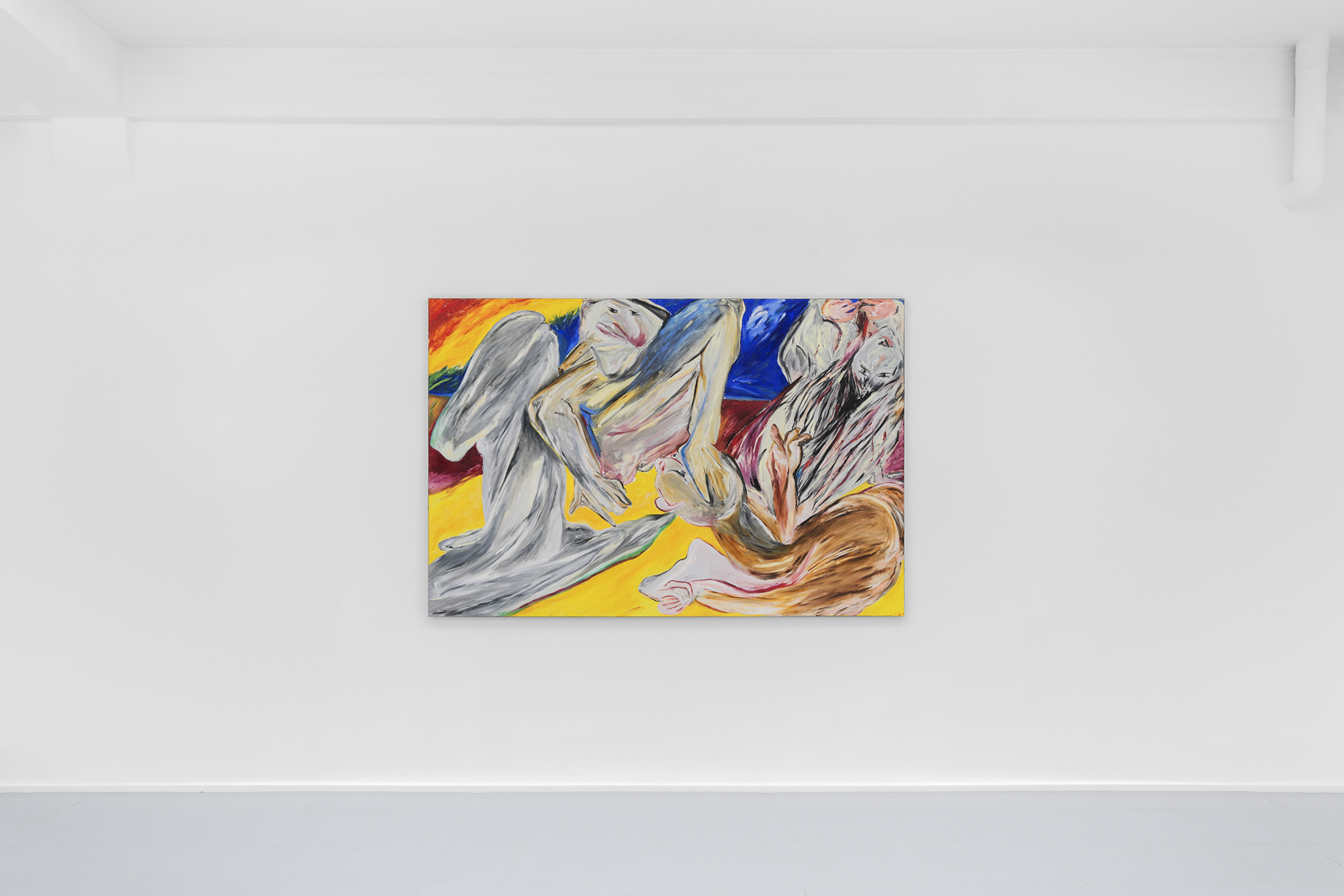
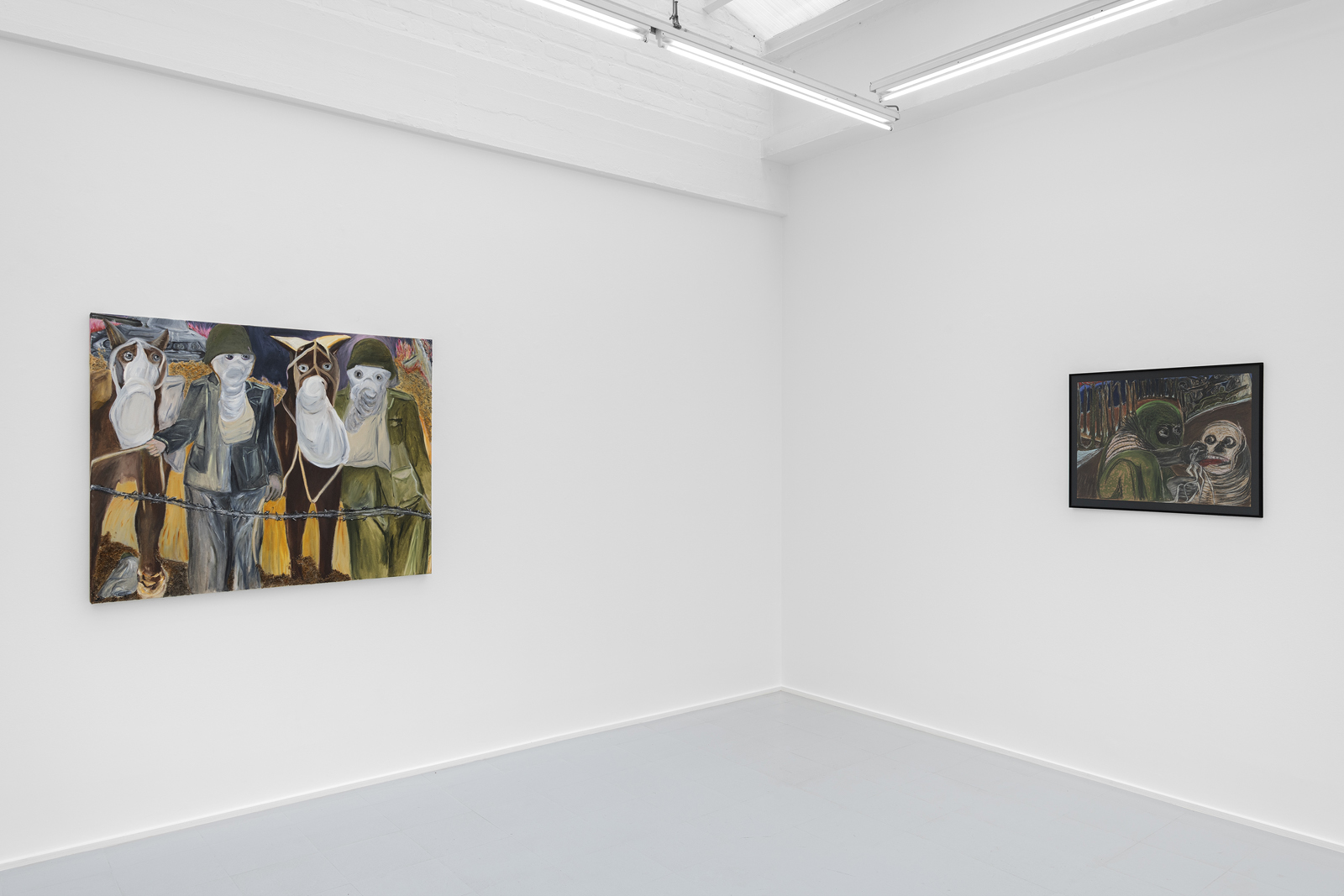
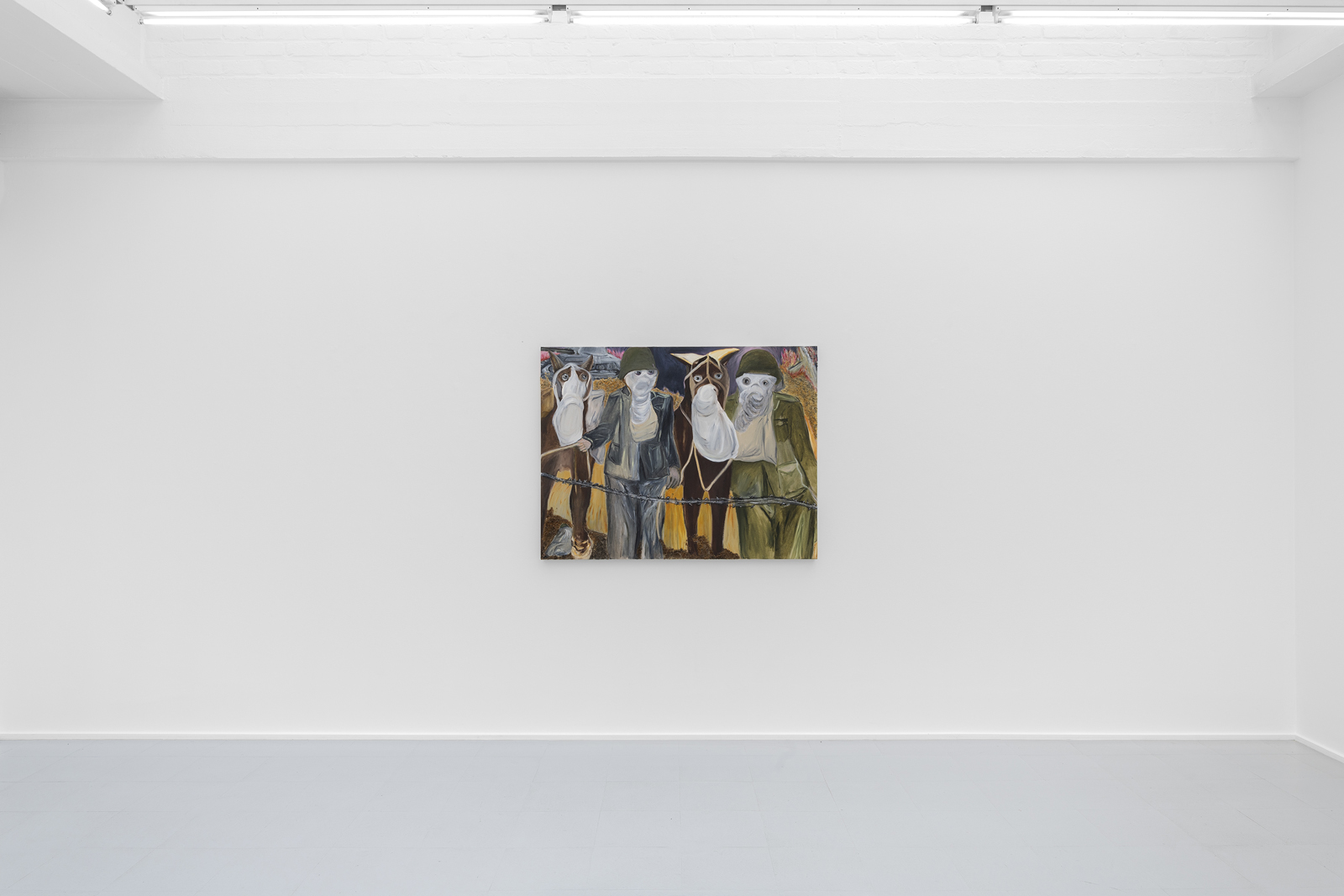
(01/11)Exhibition views
rodolphe janssen is proud to announce Dutch artist Jacqueline de Jong’s (1939, Hengelo) first exhibition at the gallery. Here for the first time, two important bodies of the artist’s work are presented in conjunction: de Jong’s 1991 Megalith series relating to the Persian Gulf War; and her War 1914–1918 series from 2013-14, which coalesces the First World War and the Syrian Civil War.
The visual representation of war carries with it a dissociative history—one of heroism, trauma, and banality. Emotionality is threatened by the compulsive nature of its viewing. The Persian Gulf War (1990–1991) is remarkable, in this history, as the first to be televised live via satellite, and filmed in night-vision from the cool perspective of the weapons themselves. Megaliths, de Jong’s response to this war and its reportage, take the form of neolithic rock formations that become—to borrow from Hal Foster’s CoBrA term—”creaturely” hybrid figures. The megaliths fill the picture space as lilting landscapes and shrouded bodies, scrambling over each other in technicolor stretches. In their grotesque corporeality, they are a pointed antidote to the emotional distance of the Gulf War’s media coverage.
In her War 1914–1918 series, meanwhile, de Jong dually references the First World War (1914–1918) and Syrian Civil War (2011–present): conflicts entangled in their shared use of chlorine gas as a chemical weapon. First introduced during the Second Battle of Ypres on April 22nd 1915, the gas is known for its psychological—as well as its asphyxiating physical—effects. Chlorine gas menaces the unprepared with its visual chaos: its presence is infamously alerted by a sickly chartreuse cloud permeating the air. Although the Geneva Protocol of 1925 banned its use in warfare, chlorine gas reemerged during the Syrian Civil War, and has been repeatedly employed by Bashar Al-Asaad’s regime since 2014. 1000s of Syrians—mainly civilians, and many of whom children—have since been displaced, severely injured, and killed by chlorine gas chemical attacks.
In the series’ depictions of First World War battles, the gas is not graphically rendered, but pervades the colouration of her harrowing scenes with a dour, muted palette in sepias and grayscale. Bodies slump, huddle, and fall in over-trodden mud, as tanks trundle through deep-cut trenches. Hybrid creatures reappear here too, this time clamouring amongst skeletons, veiled figures, and First World War soldiers. The frenzied action of the series’ battle scenes is only interrupted by the momentary stillness of a pose in Horsemen 1918: a portrait of two soldiers and their horses, all wearing the the First World War’s iconic gas masks. It is an absurd moment, but a reflective, humourful pause in a series of resoundingly panicked motion.
Artworks
(13)-
![Jacqueline de Jong, After Gulf War Megalith Family]()
(Artist) Jacqueline de Jong (Title) After Gulf War Megalith Family (Year) 1991 (medium) Oil on canvas (Dimensions) 150 x 100 cm;
59 1/8 x 39 3/8 in(Reference) JDJo018 -
![Jacqueline de Jong, 22 april 1915, gaz]()
(Artist) Jacqueline de Jong (Title) 22 april 1915, gaz (Year) 2013-14 (medium) Oil and ground pumice stone on canvas (Dimensions) 130 x 170 cm;
51 1/8 x 66 7/8 in(Reference) JDJo004 -
![Jacqueline de Jong, Gulfwar II]()
(Artist) Jacqueline de Jong (Title) Gulfwar II (Year) 1991 (medium) Oil on canvas (Dimensions) 100 x 125 cm;
39 3/8 x 49 1/4 in(Reference) JDJo016 -
![Jacqueline de Jong, Golfoorlog I]()
(Artist) Jacqueline de Jong (Title) Golfoorlog I (Year) 1991 (medium) Oil on canvas (Dimensions) 100 x 125 cm;
39 3/8 x 49 1/4 in(Reference) JDJo017 -
![Jacqueline de Jong, Fort Vaux, Verdun, Blown in a tree, Mar 1917]()
(Artist) Jacqueline de Jong (Title) Fort Vaux, Verdun, Blown in a tree, Mar 1917 (Year) 2014 (medium) Oil and ground pumice stone on canvas (Dimensions) 100 x 130 cm;
39 3/8 x 51 1/8 in(Reference) JDJo005 -
![Jacqueline de Jong, Gulwar III]()
(Artist) Jacqueline de Jong (Title) Gulwar III (Year) 1991 (medium) Oil on canvas (Dimensions) 100 x 125 cm;
39 3/8 x 49 1/4 in(Reference) JDJo019 -
![Jacqueline de Jong, Gaz Victim Syria]()
(Artist) Jacqueline de Jong (Title) Gaz Victim Syria (Year) 2013 (medium) Oil and ground pumice stone on canvas (Dimensions) 30 x 40 cm (Reference) JDJo003 -
![Jacqueline de Jong, Apocalypse now Megalithes]()
(Artist) Jacqueline de Jong (Title) Apocalypse now Megalithes (Year) 1991 (medium) Oil on canvas (Dimensions) 130 x 195 cm (Reference) JDJo026 -
![Jacqueline de Jong, Horsemen 1918]()
(Artist) Jacqueline de Jong (Title) Horsemen 1918 (Year) 2014 (medium) Oil and ground pumice stone on canvas (Dimensions) 100 x 130 cm;
39 3/8 x 51 1/8 in(Reference) JDJo007 -
![Jacqueline de Jong, WAR 1914–1918]()
(Artist) Jacqueline de Jong (Title) WAR 1914–1918 (Year) 2013 (medium) Pastel and charcoal on paper (Dimensions) 50 x 70 cm (unframed); 19 3/4 x 27 1/2 in (Reference) JDJo009 -
![Jacqueline de Jong, WAR 1914–1918]()
(Artist) Jacqueline de Jong (Title) WAR 1914–1918 (Year) 2014 (medium) Pastel and charcoal on paper (Dimensions) 50 x 70 cm (unframed); 19 3/4 x 27 1/2 in (Reference) JDJo015 -
![Jacqueline de Jong, WAR 1914–1918]()
(Artist) Jacqueline de Jong (Title) WAR 1914–1918 (Year) 2014 (medium) Pastel and charcoal on paper (Dimensions) 60 x 70 cm (unframed); 23 5/8 x 27 1/2 in (Reference) DJo013 -
![Jacqueline de Jong, WAR 1914-1918]()
(Artist) Jacqueline de Jong (Title) WAR 1914-1918 (Year) 2013 (medium) Pastel and charcoal on paper (Dimensions) 40 x 70 cm (Reference) JDJo010

